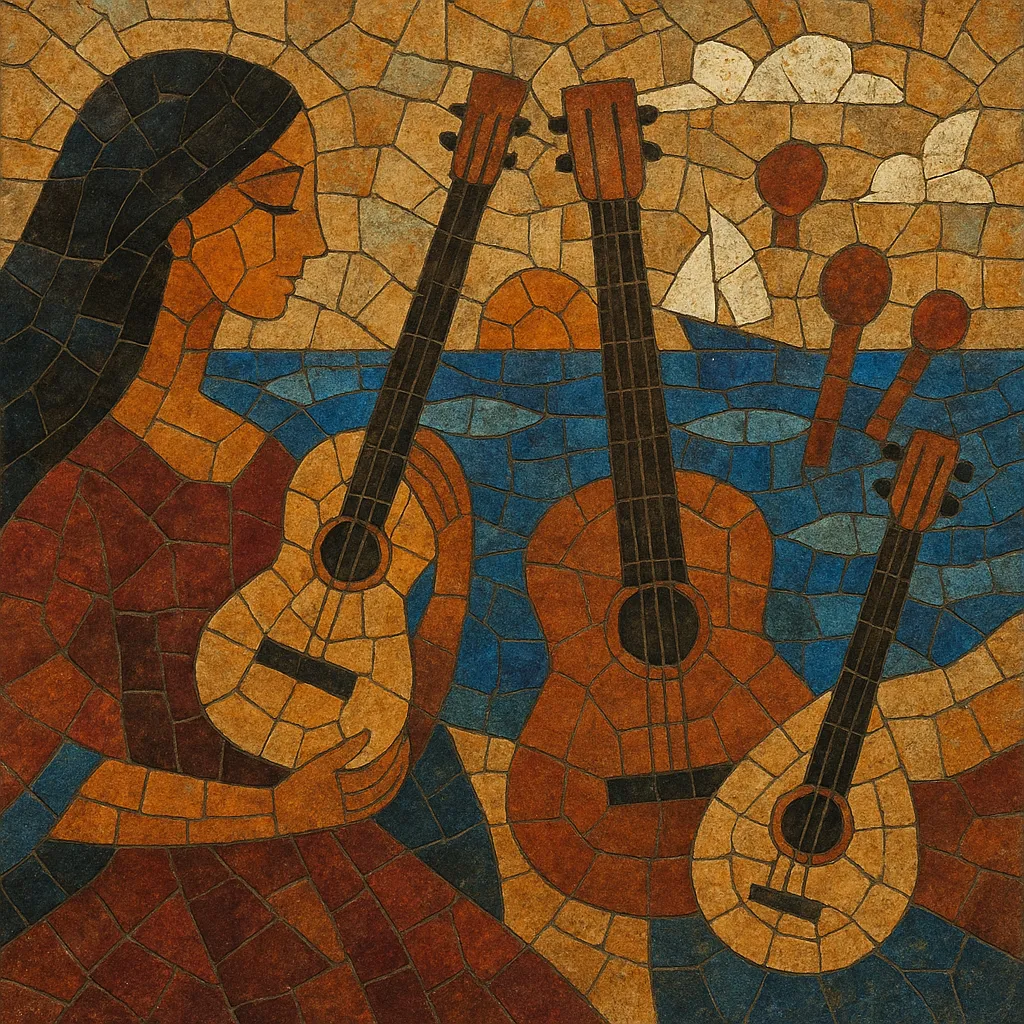Malagueña venezolana is a traditional song form from eastern Venezuela (especially the states of Nueva Esparta, Sucre, and Anzoátegui) that descends from Iberian malagueñas and related Canarian song repertories.
It is typically slow, expressive, and minor-key, with a waltz-like feel in 3/4 (often shading into sesquialtera against 6/8). Verses are commonly cast in décima espinela stanzas, inviting ornate vocal melismas and poetic imagery of love, longing, the sea, and daily life.
Accompaniment usually features cuatro, guitar, bandola oriental, mandolin, and soft maracas. Strummed rasgueado patterns, brief instrumental falsetas, and Andalusian-cadence turns (i–VII–VI–V) are characteristic. The style is heard in serenades, community gatherings, and some devotional contexts, carrying a bittersweet, nostalgic tone.
Malagueña venezolana emerged in eastern coastal communities during the 1800s, shaped by Andalusian song forms and the strong presence of Canary Island settlers in the region. The Iberian malagueña and related Spanish genres such as fandango and jota were adapted to local instruments and voices, taking root alongside other eastern Venezuelan forms like galerón and punto.
By the late 19th and early 20th centuries, the style had stabilized as a slow, expressive, waltz-like song with décima espinela verses. Singers developed a highly ornamented, melismatic delivery, while accompanying ensembles centered on cuatro, guitar, mandolin, and the bandola oriental. The harmonic language absorbed Andalusian cadential motion (i–VII–VI–V) and modal inflections heard in Spanish cante, but revoiced through Venezuelan timbres and strumming.
Malagueña became a hallmark of serenades, communal fiestas, and some devotional or wake-adjacent settings in eastern Venezuela. Its poetic texts—often improvised or semi-improvised—explore love, memory, the sea, and local life. The form coexisted with related eastern genres like punto and fulía oriental, contributing to a distinctive regional sound.
Throughout the 20th century, folkloric ensembles and notable soloists recorded and popularized malagueña venezolana nationwide. From radio and LPs to contemporary concert stages and educational programs, the genre has been preserved, arranged, and reinterpreted by tradition bearers and new generations, maintaining its identity while engaging modern instrumentation and studio practice.


